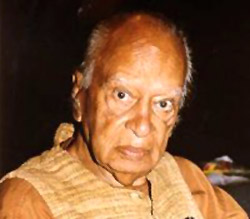 Coolie by Mulk Raj Anand is a masterpiece depicting the reality of life. The title aptly fits the story, as it is the story of a porter boy who comes from his village home to the city and works vigorously in various places. Finally he died of tuberculosis. The darkness of life is competently described by the author here in this novel.
Coolie by Mulk Raj Anand is a masterpiece depicting the reality of life. The title aptly fits the story, as it is the story of a porter boy who comes from his village home to the city and works vigorously in various places. Finally he died of tuberculosis. The darkness of life is competently described by the author here in this novel.
Known as Indian novelist, short-story writer, and also an art critic writing in English, Mulk Raj Anand was among the first writers to render Punjabi and Hindustani idioms into English. Anand drew a realistic and sympathetic portrait of the poor of his country. With Raja Rao and R. K. Narayan he has been regarded as one the founding fathers of the Indian English novel. Born in Peshawar, Mulk Raj Anand was the son of Lal Chand, a coppersmith and soldier, and Ishwar Kaur. At his early age Anand protested against his father`s servility to the British authorities. His first texts were born as a reaction to the trauma of the suicide of an aunt, who had been excommunicated for dining with a Muslim woman. Some of his poetry was inspired by an unhappy love for a Muslim girl who was married. Anand attended Khalsa College, Amritsar, and entered the University of Punjab in 1921. He graduated with honours in 1924. Thereafter Anand did his additional studies at Cambridge and at London University, receiving his Ph.D. in 1929, he studied and later did lectureship at League of Nations School of Intellectual Cooperation in Geneva. Between 1932 and 1945 Anand also lectured at Workers Educational Association in London.
Synopsis:
The `Coolie` by `Mulk raj Anand` gives a chilling picture of a down stepped boy Munno who at his early stage gets into obscurity of his own existence. He could feel the itch of an orphan and Anand could rightly give a heart throbbing description of his mental state and his all activities in a unique way. This book is really touchy for an emotional person. The book holds oneself to the way the life of Munno takes on from his home in village to a role as a servant in a house, likewise as a factory worker and eventually as a rickshaw driver. Finally he dies by tuberculosis. There is enough of such human existence in and around the society but under the pressure of survival of fittest these persons are ignored everyday. This book makes the people to think for a while about their lives who just seek only a decent living. Today, people may find Anand`s razor-sharp realism of Coolie to be brusque, but the fact is that the novel still makes the reader twist in discomfort with its naked realism. Coolie is a great novel of pre-independence India that has chivalrously stood the test of time. One clearly remembers the protagonist`s agony on being denied the right to answer nature`s call. That one scene alone makes for timeless reading.
Being published by the South Asia Books, the `Coolie` is a life story of a porter boy that shows fingers to the reality of life.













